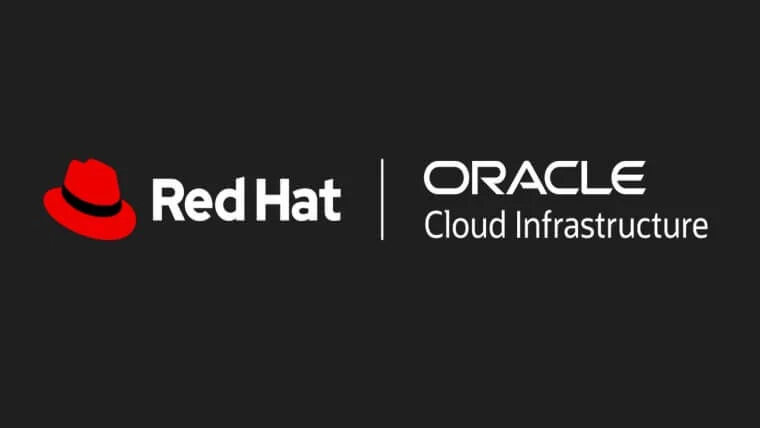An interview with Matt Hicks, Red Hat’s global executive VP of products and technologies.
The world has of course been through a period of unprecedented change. Talk centred around global disruption; what might have raised eyebrows and pricked ears half a decade ago has now become the standard narrative across our news agenda. We don’t need to list COVID-19, climate change, European war, energy crises and inflation to illustrate the point, but forgive me, for that’s what I just did.
In the face of these penetrating forces, businesses have been forced to adopt a more modular, agile and changeable way of working. What with sometimes switching product or service markets within weeks, enterprises have had to become more open, hybrid and cloud-centric.
This new playbook for business operations has stark parallels with the core methodologies, mindsets and mantras that govern open source. Founded in the community contribution model of collaborative exchange, open source builds platforms, frameworks and individual elements that are open to continuous development, expansion and even forked repositioning.
President and CEO of Red Hat Paul Cormier has said that his firm’s ‘The State of Enterprise Open Source’ report for 2022 found that 92 percent of IT leaders surveyed feel enterprise open source development models and solutions are important to addressing their disruption-related challenges, with COVID-19 marked out as the major change vector.
“This is not surprising to me, considering the moves I saw many businesses make towards the open hybrid cloud even before the pandemic. Whether an intentional architecture choice or a result of rapid market changes, cloud computing and always-on services built using the open source development model and open source code are increasingly crucial to nearly every organisation regardless of industry,” said Cormier.
Re-racking the stack
Keen to progress this point of analysis, ERP Today discussed the state of the software nation with Matt Hicks, Red Hat’s global executive VP of products and technologies. With so many ERP deployments existing as monolithic behemoths, what first steps does Hicks advise for enterprises looking to inject open agility into their already-operational enterprise stacks?
Matt Hicks (MH): Adopting open source products, especially in existing deployments, isn’t an all-or-nothing approach. IT teams should look at how open source technologies can bolster or supplement existing deployments and, as needs change, slowly shift components of monolithic applications to open source counterparts when it makes sense. Disrupting a critical application is never the right path, but deliberately evolving into an open ERP foundation is absolutely a well-trodden and successful approach.
AB: Before we move to look at some of what Red Hat would count as its core competencies and ask where they apply to modern ERP deployments, let’s consider the overall state of open source and the shape of the market today. Are the options for thoroughbred enterprise open source comparatively limited? To put it another way, if we leave Microsoft and every other vendor’s ‘born again’ open source epiphany aside for a moment, how should we think about the open-first enterprise software market in general? Aside from Red Hat, SUSE and perhaps Canonical, should we look to Github and the Linux Foundation or the Apache Software Foundation to follow the bellwether trends?
MH: Open source movements have to start somewhere in the software stack. For many enterprise workloads, the foundation is Linux – it’s the workhorse of modern IT and, more than likely, supports a lot of monolithic ERP deployments in some way or another, directly or indirectly. But on top of Linux, you have a vast array of software available depending on your needs. From distributed computing needs with technologies like Kubernetes or maybe machine learning (ML) capabilities with Tensorflow, the capabilities available today are almost limitless. Open source technologies are, almost by definition, modular – so it’s about finding the pieces that you are comfortable with and can start implementing to add value with minimum impact.
Give… and ye shall receive
AB: Red Hat is ‘famously’ the biggest code commit contributor to the Linux kernel. In its new guise under the IBM family umbrella, what is the company doing to maintain its leadership position in open technologies? And, in parallel with that point, what should ERP vendors and large-scale ERP customers be doing to ‘give back’ and actively engage in open platform development?
MH: Red Hat still maintains its leadership position in enterprise open source – that hasn’t changed with IBM. We continue to be open by default – everything we produce is available as open source code or will be, in the case of technologies that we’ve acquired. From an ERP customer and vendor perspective, giving back doesn’t just mean contributing code, although that’s certainly one aspect. It could be participating in community conversations, providing feedback on new releases or even reviewing documentation – coding is one part of open source communities, but organisations should not let technical contributions get in the way of how they engage in the open source world.
“The rapid rise of ‘intelligence’ in edge devices means that IT teams need to think of them as extensions of their cloud and on-premise environments.”
AB: Looking at key areas for Red Hat, we can see that edge computing is a point of central focus. Red Hat is investing in OpenShift and Red Hat Enterprise Linux (RHEL) in ways that are designed to drive adoption of the edge computing model. What are your specific plans in this space?
MH: Fundamentally, edge computing is the latest footprint of the open hybrid cloud, which already includes bare-metal and virtualised environments as well as private and public cloud deployments. In many industries, the devices at the edge represent these organisations’ core business. What we are working to do is have Red Hat Enterprise Linux and Red Hat OpenShift follow our customers, in whatever footprint they operate and with whatever workload they use, across the hybrid cloud. This includes the edge – we are building edge features and capabilities into our products and services; it’s not a separate offering. The hardware specifications may be different, the footprint will be probably smaller, but we believe that those edge devices will still integrate with and leverage resources at the datacentre to maximise their business value.
AB: With edge computing in mind then, while thinking about the implementation of Internet of Things platforms in industrial environments, can we suggest that ERP will need to continue being much more than just a system of record? To put it another way, is this the point where edge compute real-time data transmission will mean a level of re-architected planning and provisioning for existing enterprise systems – and what impact will the fact that devices are getting increasingly smarter and process more in-situ have on this whole discussion?
MH: The rapid rise of ‘intelligence’ in edge devices means that IT teams need to think of them as extensions of their cloud and on-premise environments. But these devices can’t be isolated; they still have to retain connection and commonality to primary IT environments, otherwise sprawl and fragmentation are real concerns. They still need to be secure. They still need to be maintained. They are still a core part of the overall IT environment. To enable this, there has to be a fundamental, common platform that crosses the entirety of a modern enterprise’s operations, from the farthest edge of the network to the largest cloud deployment. For Red Hat, this commonality is driven by Linux and by Kubernetes.
Smarter software suites and solutions
AB: Thinking about smartness then and how we should approach ML, what is Red Hat doing with its OpenShift Data Science offering to lay the foundation for AI applications?
MH: OpenShift Data Science is tailored specifically for data scientists and developers building intelligent applications. It’s a managed cloud service, so the rigours of handling the underlying infrastructure, provisioning and deep technical administration are Red Hat’s responsibility, not the users. This enables more rapid development, training and testing of machine-learning models in a contained sandbox that mirrors the production environment, making it easier to ultimately shift these workloads into the real world.
AB: How is Red Hat improving and expanding availability for Ansible Automation Platform, especially given that the company recently unveiled the first Ansible service on a major cloud platform via Azure?
MH: It’s not just on-premise environments that need automation; the rise of hybrid cloud means that IT teams are facing an expansion of systems that have one foot in the datacentre and another in a public cloud, like Azure. Ansible Automation Platform on Azure gives IT teams familiar tools to automate complex cloud environments – it might be a new environment, but Ansible is well-known by many IT operations teams and provides a familiar touchstone to tackle a new set of challenges at cloud scale.
AB: Coming full circle let’s return to Red Hat CEO Paul Cormier, who reminds us that some technology persists for decades if not longer. What this means is the decisions IT leaders are making today will impact their organisation’s nimbleness and market response down the road, whether it’s in two years or 20.
MH: As new infrastructure is being built out, you can’t leave behind existing systems and tools. You need products and services that work with them. That’s the value of open source. As CEO Cormier said in the very first report: ‘The question is no longer whether your enterprise should adopt open technologies; the question is when – and how.’
If we accept the effect that open source has had so far – and has now come through its adolescence with a blistering spurt of growth in post-millennial times – then the lesson for ERP practitioners should be clear. Enterprise open source is all about flexibility, agility and scalability, but it is also about exchangeability, shareability and community interactivity.





